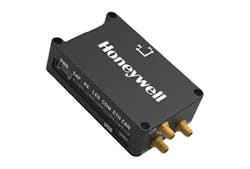Navigation avionics to enable unmanned aircraft to operate in GPS-denied environments offered by Honeywell
PHOENIX – Honeywell Aerospace in Phoenix is introducing the Honeywell Compact Inertial Navigation System and Honeywell Radar Velocity System for commercial and military aviation applications in small and medium-sized unmanned aerial vehicles (UAVs) -- especially those flying beyond visual line of sight missions.
These avionics systems offer aviation navigation with low size, weight, and power consumption (SWaP), and enable continued operations even in Global Navigation Satellite Systems (GNSS)-challenged or -denied environments.
Globally, GNSS-based systems have become the primary source of navigation for vehicles across air, land, and sea. However, that has led to a significant increase in intentional and unintentional disruptions including jamming and spoofing.
Today systems must be able to handle signal disruption and maintain access to critical navigation and timing. Honeywell combines GNSS anti-jamming, inertial navigation, and alternative navigation systems.
Related: The evolution of UAV avionics
The Honeywell Compact Inertial Navigation System measures about the size of a deck of cards and uses tactical-grade inertial sensors to provide position information, and navigates during short GNSS outages in urban canyons, or in strong jamming environments.
Honeywell Radar Velocity System helps navigate during long GNSS outages, and works with several alternative navigation systems to ensure safe and reliable operations in GNSS-challenged or -denied environments.
For more information contact Honeywell Aerospace online at https://aerospace.honeywell.com.

